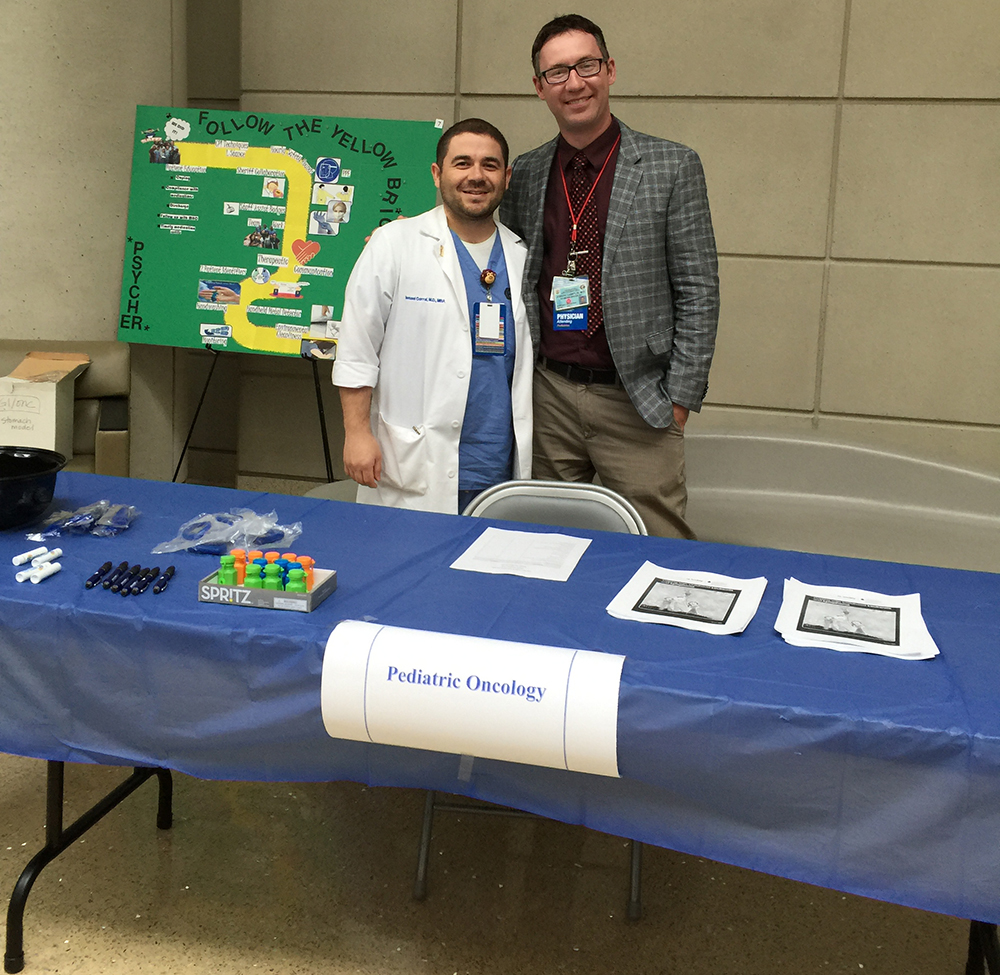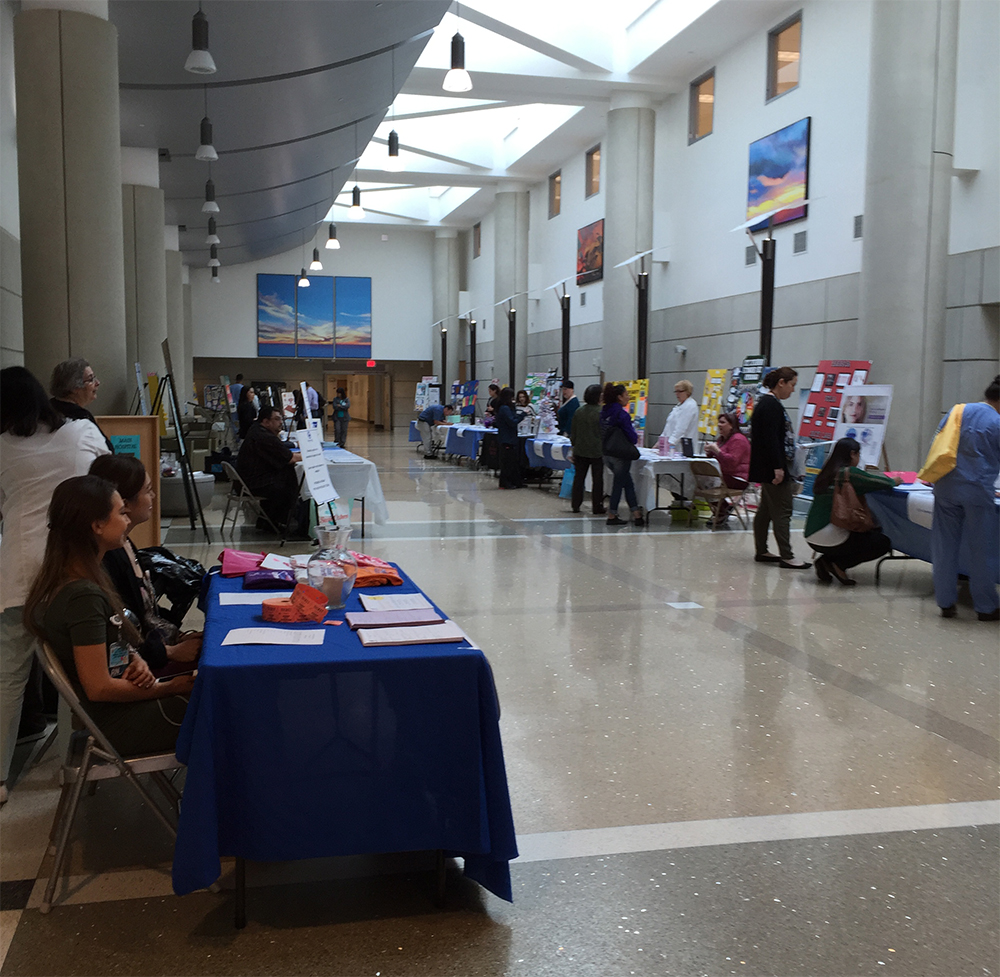by Ismael Corral, M.D. PGY-1
Free services near you!
Health and resource fairs are a good way for community residents to learn about services in their area.
The events bring together government agencies, non-profit organizations and local businesses that provide medical services, promote health awareness and offer preventative care. Fair visitors can learn how to access other health-related services such as insurance (for example, health, car and earthquake coverage), mental health care and home care providers.
Other fair participants often include youth groups, such as Boys and Girls clubs, YMCA and sports leagues and local faith-based organizations. Food vendors, musicians, artists and other community groups often contribute fun activities and free samples. With all these services in one spot, it easy to become connected in a single afternoon!
I have experienced health fairs first hand. On May 5 while on the Advocacy Rotation, I participated in Harbor-UCLA Medical Center Cancer Awareness Fair held in the hospital. Being on-site made it easy for hospital visitors to learn about Harbor’s programs for cancer screening and treatment.
I helped represent the Department of Pediatrics, Division of Hematology-Oncology at the fair. We provided visitors with information about common pediatric cancers, including diagnosis, treatment and prognosis, as well as resources to help cope with cancer. We also gave out information about cancer prevention. We talked about the importance of using the human papilloma virus vaccine (HPV) in pre-teens and adolescents to prevent cervical and other genital cancers.
But that wasn’t my first experience connecting with the community in a health fair. While attending medical school at University of California at Irvine, I was able to contribute to the Madison Park Neighborhood Association (MPNA) Annual Resource Fair. MPNA serves an area of about 8,000 residents in South Santa Ana and the group’s goal is to promote education, health, fitness, and community.
The MPNA events were mainly attended by an underserved population, many of whom were Latino. I was part of the Program in Medical Education for the Latino Community, which was mostly comprised of underrepresented medical students. In all four years of medical school, I helped with organizing the event. The fair promoted preventative health care with a walk-a-thon, educational materials and medical screenings, such as blood pressure checks.
The MPNA festivals were not only for adults – there were also activities for kids. We held workshops with ultrasound, anatomy lessons and X-rays. One of the main goals was to pique the kids’ interest in medical careers. With telling our stories and wearing our white coats, we hoped the kids could see that a career in medicine was possible, no matter how they grew up.
Researchers have shown that health fairs are valuable tools in reaching underserved communities. Low-income residents may not have access to medical care, are not aware of community resources, or even know that they are eligible for health care services. Health fairs can help close some of those gaps.
The community fairs not only serve as links to resources, but can also help build connections between neighbors. It’s a great way to foster friendships. Community cohesion has proven important for survival of individuals and the neighborhood, not just in the everyday but also during times of distress, such as natural disasters.
Resource fairs may facilitate encounters with elected representatives, strengthening the political voice of the community. At the MPNA events, city council members would often participate. Citizens had opportunities to meet their representatives and have one-on-one conversations. One year Tom Daly, California State Assemblyman from the 69th District, attended the fair. I had an opportunity to speak with him about future initiatives for improving the Madison Park neighborhood. It was an empowering experience as a child and community advocate.
Having a strong connection with the community is what drew me to Harbor-UCLA. Even during our first year of residency, we have the opportunity to travel outside of the hospital and connect with community resources. We often refer our patients to those services. The experience allows us to learn about the organizations and even more importantly, meet the individuals that help us create a patient-centered team. Those connections allow us to serve our patients more effectively.
As physicians, I cannot think of a better way to advocate for our patients than to know what lies beyond the doorway of the hospital.


